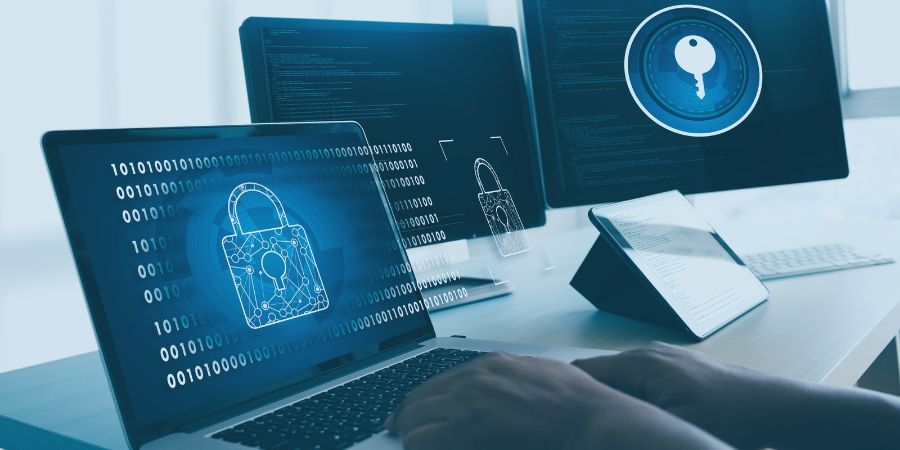How to Build and Maintain Cyber Resilience in Financial Services Sector
Published on June 26, 2023
Last updated on July 30, 2024
Jump to a section
In today's ever-evolving digital landscape, financial firms and institutions must always be on guard. The International Monetary Fund (IMF) has acknowledged that cyber threats are growing in the financial sector, making financial organisations vulnerable to cyber attacks.
In 2016, the central bank of Bangladesh was targeted by hackers trying to steal $1 billion from the system's payment messaging system*. They managed to intervene, but the hackers managed to steal $101 million when they did so. This was a wake-up call for financial institutions globally to take charge before something more severe could happen and never to underestimate cyber risks and adverse impacts.
In February 2020, the IMF President of the European Central Bank warned that another cyber attack could result in a serious financial crisis. Whether it could happen or not, financial firms should take the warning seriously.
As a part of operational resilience in the financial sector, a cyber resilience program is a must to maintain secure and reliable systems that ensure financial services firms meet their mission or business objectives.

Why Is Cyber Resilience Important in the Financial Sector?
Cyber resilience is crucial for financial firms, given the proliferation of attacks exploiting common vulnerabilities and critical system elements of the target organisations. Since financial institutions play a crucial role in the economy, firms must be at least one step ahead in improving cyber resilience before critical assets are stolen or accessed without authorisation.
Cyber resilience is the organisation's ability to detect, prevent, and respond to any cyber security incident in a timely and actionable manner. It can also reduce the impact that mission-critical services have on the organisation and the industry as a whole contested cyber environment. Players in the financial sector must ensure operational resilience and business continuity from the organisational level. Even with cyber incidents, you can maintain Important Business Services (IBS) and serve your clients, thus keeping your reputation and stakeholders' trust despite the security breach incident.
Cyber resilience is non-negotiable for financial services firms and institutions. The ability to adapt to various threats and prepare for different security incidents is vital. It involves multiple layers of defence to prepare for known and unknown crises. Your organisation's ability to demonstrate a cyber-resilient response can protect your assets and preserve the trust of your customers.
Common Cyber Threats in the Financial Sector
Cyber threats come in all forms, shapes, and sizes. Cyber criminals utilise the same technology (or even more advanced in some cases) you use to protect your critical resources and business processes to attack any vulnerabilities found in your security solutions.
Identifying the various cyber risk forms can prevent major cybersecurity incidents and ensure business continuity.
Artificial Intelligence
Artificial intelligence (AI) is one of many innovative tools businesses utilise to perform and streamline their operations. But because of the proliferation of AI technology and tools, cyber criminals use AI technology to take advantage of any organisations lacking in security controls, particularly the network and IT systems.
Examples of AI-powered cyber events include sophisticated phishing attempts, evading security controls and cybersecurity measures, and targeted social engineering. Cybercriminals have mastered the art of manipulation aided by technological tools to bypass fraud detection systems and implement large-scale security breaches successfully. Hence, financial organisations should not be complacent with existing measures to protect against cyber security incidents because criminals and cyber threats continue to evolve.

Supply Chain Attacks
Supply chain attacks are another growing concern in the financial sector. The attack involves third-party suppliers and vendors as a method to penetrate financial services firms with heightened security controls.
These attackers leverage supply chain vendors' and partners' trust and familiarity to exploit any vulnerabilities or weaknesses in the existing security protocols. When attackers infiltrate the security level of a trusted vendor, it is easier for them to achieve their intended outcomes. It could result in adverse cyber events that cause loss of sensitive customer data, financial theft, loss of critical assets, and disruption of business processes.
This type of attack highlights the importance of supply chain transparency, as firms work with vendors with a robust management system for their cyber security and business continuity. It requires firms to be more diligent in vetting their third-party suppliers and vendors to protect the entire security ecosystem.
Ransomware
Ransomware is nothing new when it comes to the cyber security landscape. It is one of the most prevalent forms of attack employed by cyber threats and criminals, but they are becoming a more common method for attacking in the financial sector.
Ransomware attacks work by encrypting the victim's data and demanding a ransom payment in exchange for the decryption of vulnerable data. Financial organisations are primary targets for ransomware attackers because of the nature of the business and the potential financial gain for the attackers.
Ransomware attacks could lead to reputational damage, financial loss, and disruption of business processes. There are several points of entry for attackers (which can become single points of failure that can bring the whole system to a standstill), but they commonly penetrate an organisation's secure and reliable systems through human error, outdated software, and weak security measures.
Also read: How to Prevent Ransomware Attacks - C2
Cybersecurity and Cyber Resilience Strategies
How does cyber resilience work? The primary goal is to improve cyber resilience and ensure the continuity of Important Business Services (IBS). It differs from common causes of business disruption (e.g. natural disasters) because cyber threats often employ sophisticated tools and technologies to launch attacks.
Cyber resilience is the ability to respond and recover promptly, no matter how big or small the cyber events are.
1. Perform a comprehensive risk assessment
Any strategy to help your organisation become cyber resilient and successfully recover from an attack must start with a comprehensive risk assessment. The goal is to identify potential cyber risks, their potential impact on your organisation, and ways to respond and recover.
Based on your risk assessment, you can prioritise measures to protect systems against identified risks with the highest likelihood and the severity of potential consequences. Moreover, you should regularly assess those risks as new ones could emerge instead of the ones you previously identified.
2. Boost security access controls
Focus on your security teams by building robust security control and measures for sensitive data and information systems. Employ various access control and security measures, such as password policies, multi-factor authentication, and privileged access management. You should also regularly update these security measures to ensure their effectiveness.

3. Conduct regular system updates
Like conducting regular risk assessments, you should regularly update your information systems and security policies to match new risks and potential damage. It's also important to comprehensively assess your own security posture and plans so that you not only have the right security measure but that you are able to respond in a more timely and appropriate manner to minimise the potential impact in case of a successful attack. That way, your organisation can successfully and swiftly recover if attacked.
4. Invest in employee training
Your employees and staff play a critical role in safeguarding your critical assets. Make sure you educate your employees about existing and new forms of cyber threats so they can detect suspicious activities and actively guard your business operations and systems against these threats. Equip them with the right tools they can use to maintain data protection efforts and become cyber resilient against social engineering.
5. Create a Robust Incident Response Plan
Develop an incident response plan in case of a security breach or cyber event as a part of your operational resilience framework. Build a dedicated team whose main responsibility is to ensure that impact tolerances are established and your plans are properly tested to ensure effectiveness and relevance regularly.
A solid operational resilience framework with a cyber resilience strategy keeps you compliant and assures stakeholders and customers that you have things under control during and after a cyber event.

Building Cyber Resilience: Are You Prepared for Cyber Attacks?
A cyber incident is not a matter of “if” but “when.” Those organisations that plan ahead and put emphasis on cyber resilience have a higher chance of successfully recovering from these incidents. As financial services firms become a highly-attractive target for cyber attacks, it is imperative to factor in cyber resilience strategy when building operational resilience.
Book a demo today to see how C2 Meridian software can help financial services firms safeguard their Important Business Services and achieve FCA/PRA compliance.
Written by Richard McGlave
Founder & CEO at Continuity2
With over 30 years of experience as a Business Continuity and Resilience Practitioner, Richard knows the discipline like the back of his hand, and even helped standardise BS25999 and ISO 22301. Richard also specialises in the lean implementation of Business Continuity, IT Service Continuity and Security Management Systems for over 70 organisations worldwide.


Written by Richard McGlave
Founder & CEO at Continuity2
With over 30 years of experience as a Business Continuity and Resilience Practitioner, Richard knows the discipline like the back of his hand, and even helped standardise BS25999 and ISO 22301. Richard also specialises in the lean implementation of Business Continuity, IT Service Continuity and Security Management Systems for over 70 organisations worldwide.